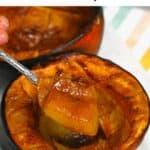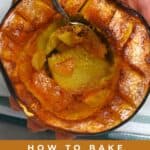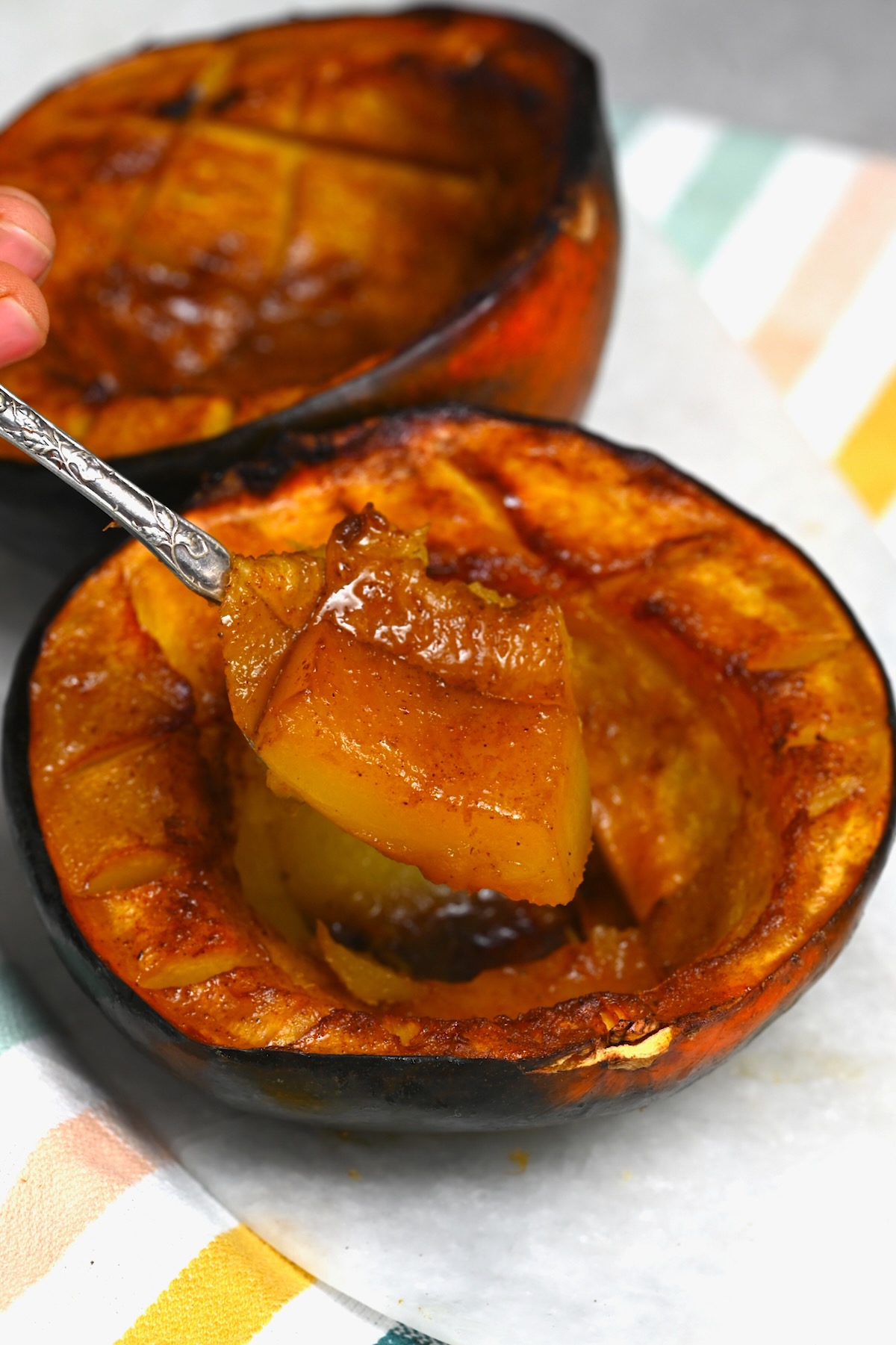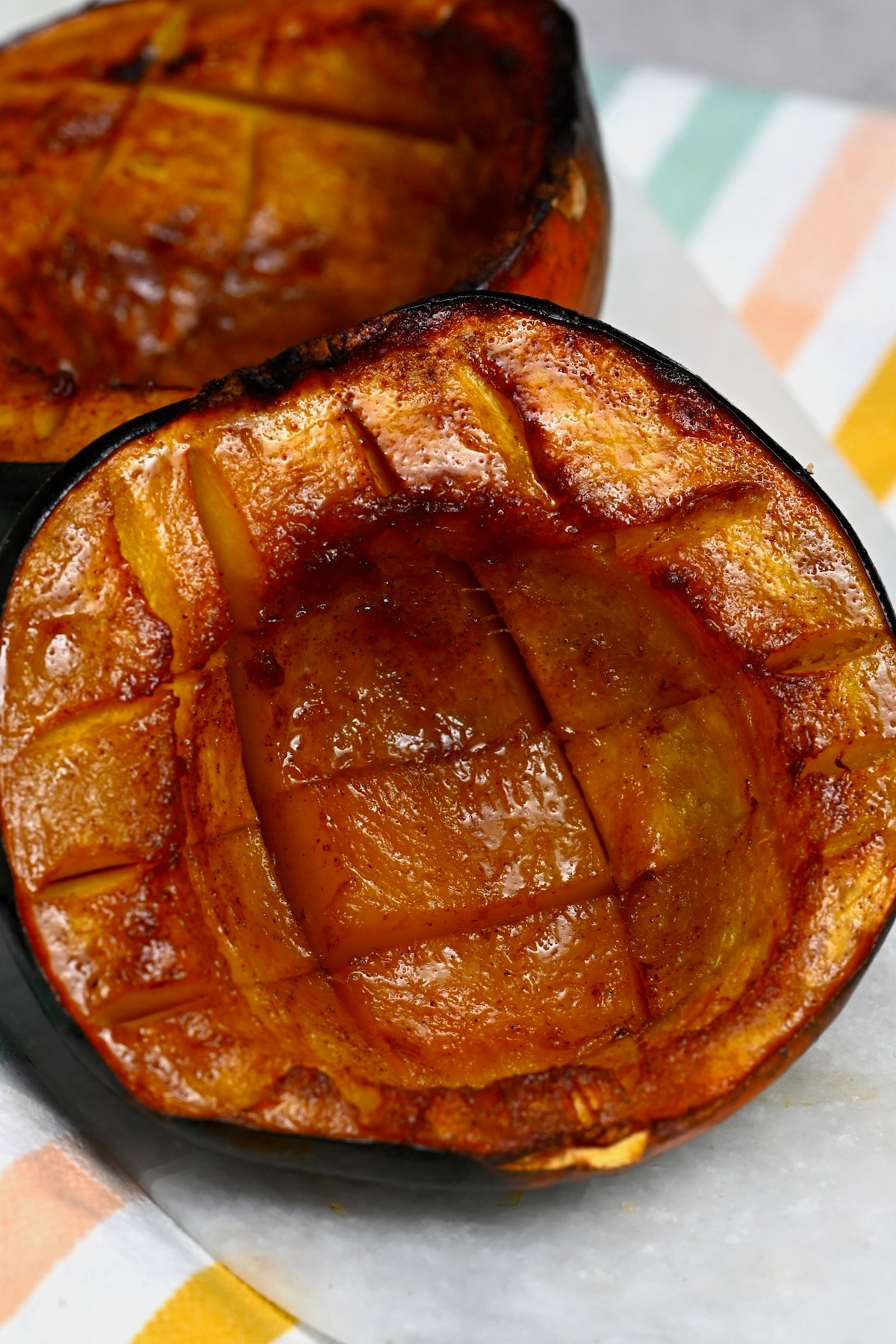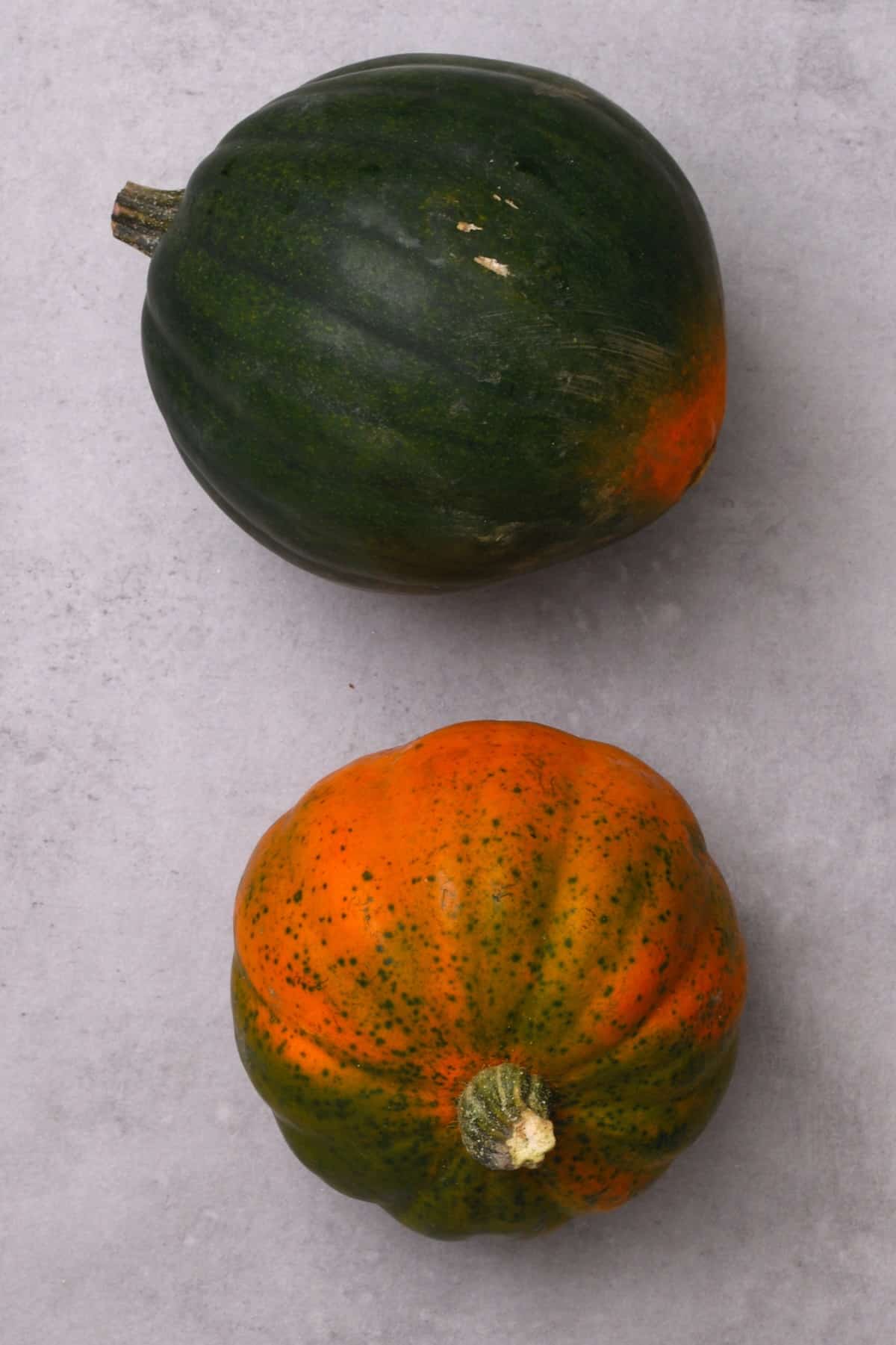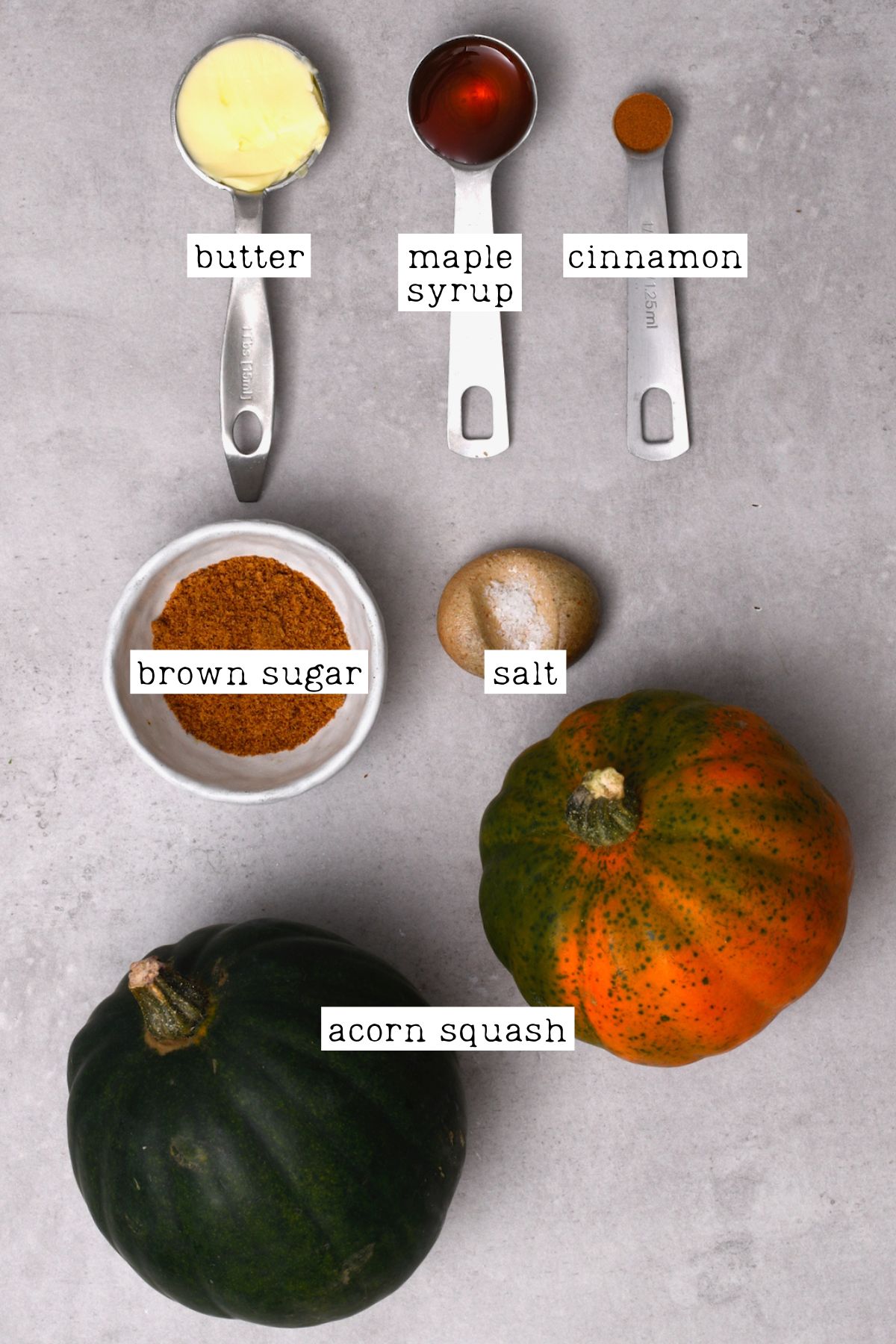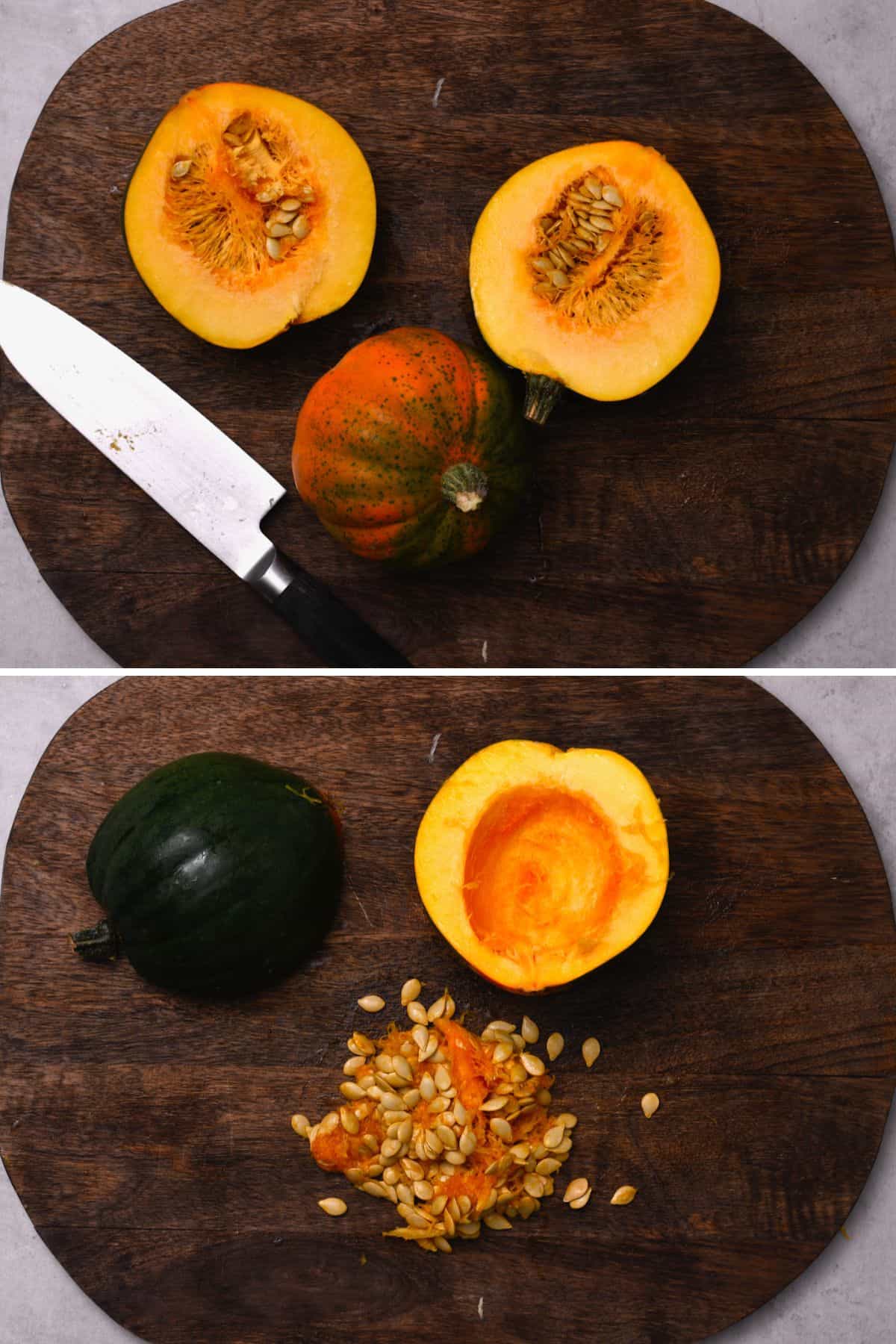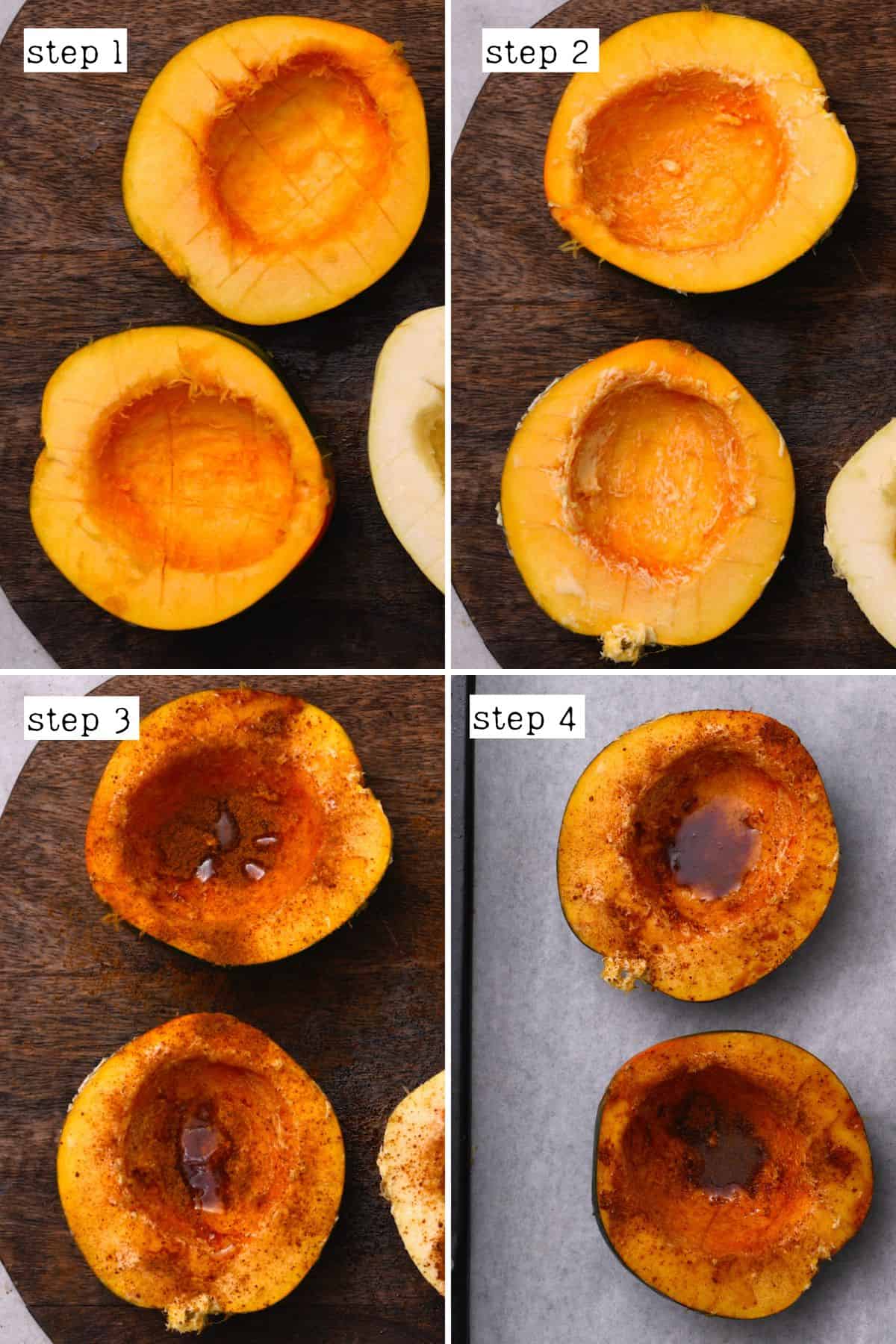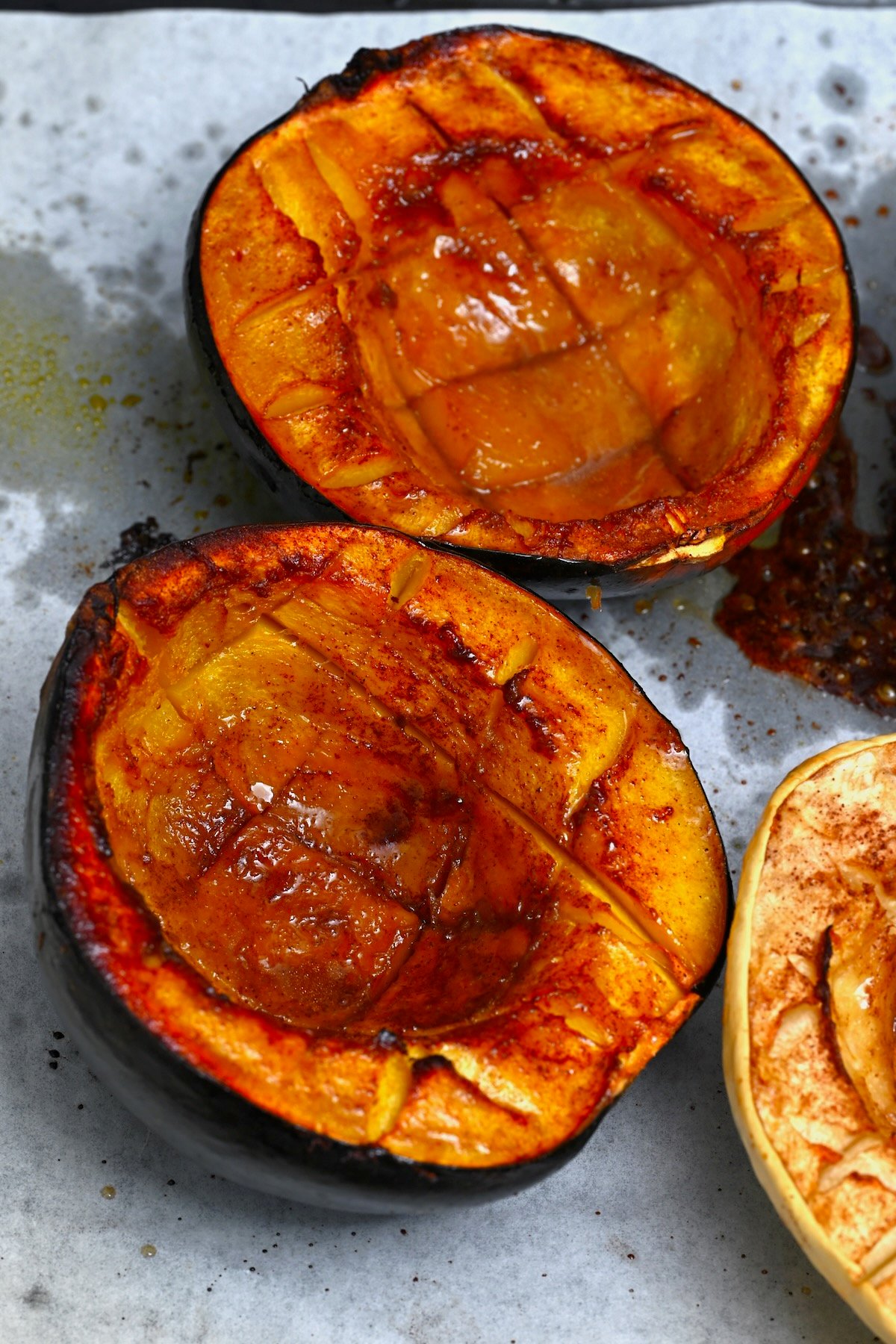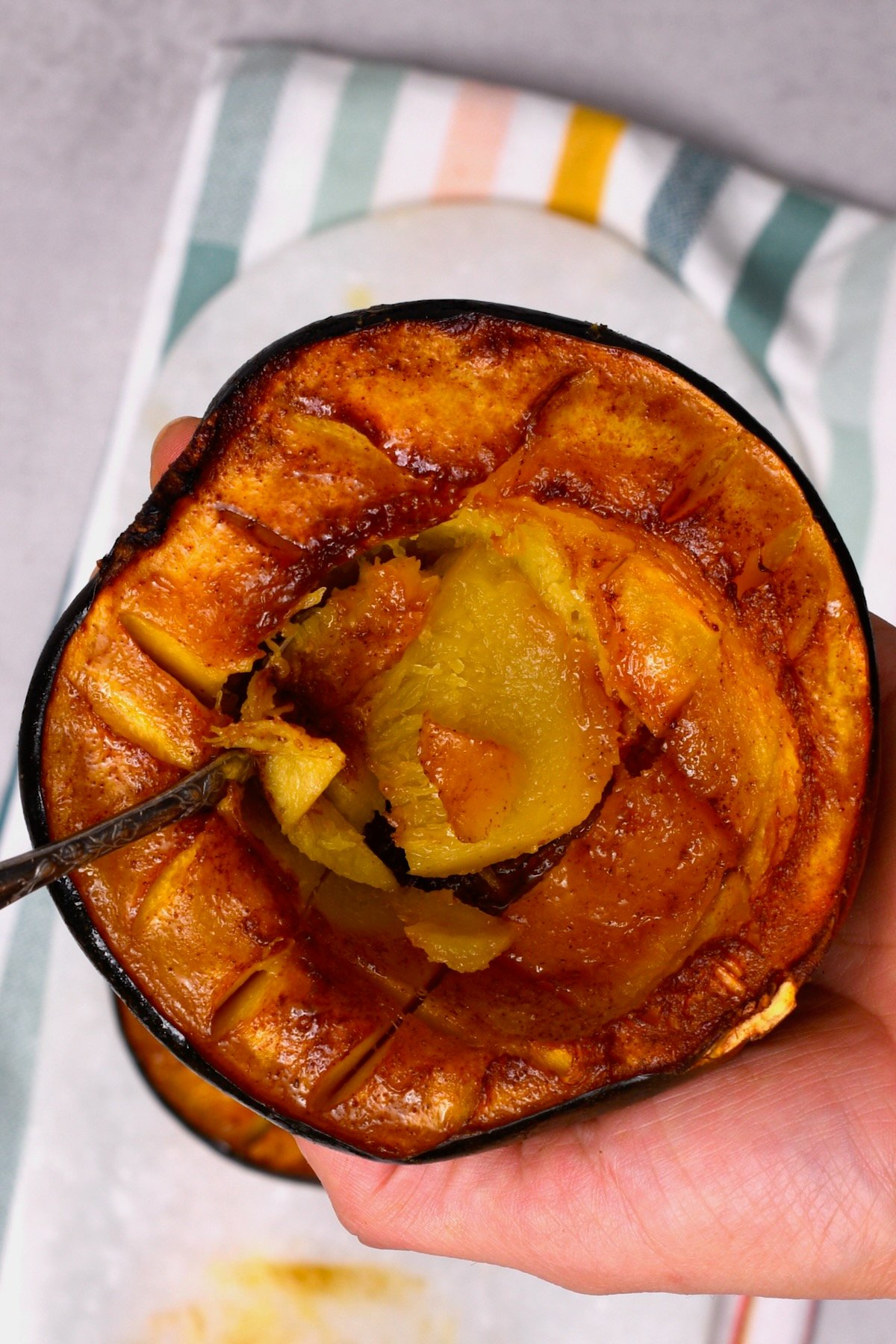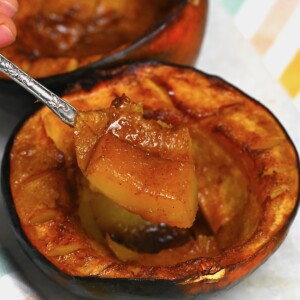Roasting acorn squash isn’t as hard as it looks. When we’re looking for comforting, cozy foods to get us through the cold, dark winter months, I’m going to guess your mind doesn’t immediately go to winter squash recipes. So, I’m bringing you my classic acorn squash recipes, showing you the best way to cook acorn squash and create a vegetarian staple for weekday dinners or to impress at your next dinner party. Baked acorn squash halves have been a staple in North America for centuries and their sweet yet savory taste keeps people coming back to them year after year. Acorn squash (baked) is packed full of goodness, including zero fat and cholesterol and high levels of fiber, Vitamins C & A, and iron. It’s also high in antioxidants, good for your eye health, can lower the risk of heart disease, and help protect the skin. Don’t let this baked acorn squash recipe spook you – it seems a lot harder than it actually is. Cooking any kind of gourd, whether it be squash, pumpkin, or even cucumbers, is an easy way to get more veggies into your diet and vary the vegetarian dishes you have in your dinner rotation. Not to mention, it’s a great addition to meal prep. Baked acorn squash will keep for up to four days when properly sealed and refrigerated (and keep lots of its flavor).
How to Choose a Good Acorn Squash
There’s an art to choosing the best vehicle for a baked squash recipe. Your acorn squash should have a woody stem. You won’t be using that during the cooking process, but it can be a good indicator of whether your squash is perfectly ripe or not quite done. When picking your vegetable for this easy acorn squash recipe, you want to look for:
Color: It should have a deep green color. It might also have a few patches of orange or yellow, but this would indicate the acorn squash is more on the unripe side than ripe. Size: Your acorn squash should have a relatively oval shape and measure between 8-10 inches long. It should also feel heavy for its size. Ripeness: The color should indicate how ripe the acorn squash is, but if it’s not quite clear, you can always try the pressure test. Give the acorn squash a little squeeze. It should be firm but respond to the pressure. If it’s mushy, it won’t work for baked squash – and it’s probably past its prime.
Ingredients for Roasted Acorn Squash
You just need a few ingredients for this roasted acorn squash recipe.
Acorn squash: For cooking acorn squash, I like to use the traditional variety. But for this recipe, you can also substitute with butternut squash, Kabocha (Japanese winter squash), pumpkin, sweet dumpling pumpkin, and other varieties of gourd. Butter: You can use a dairy-free alternative or olive oil if you prefer, but I like butter (it gives oven-cooked squash a nice richness). Brown sugar: As this is a brown sugar acorn squash recipe, you should use light or dark brown sugar, though in a pinch you can use white or cane, it just won’t caramelize the same way. Maple syrup: You can use honey or molasses if you don’t have pure maple syrup to hand – they’ll all enhance the natural sweetness of this baked acorn squash recipe. Cinnamon and kosher salt: You can also use mixed spice if you prefer, though I find cinnamon works best with the flavor of the acorn squash.
Check the recipe card below for ideas for optional add-ins like pepper, garlic, and herbs.
How to Prepare Acorn Squash
Preheat your oven to 400ºF/200ºC. Before you get your acorn squash cooking, wash it thoroughly to remove any extra dirt or dust. On a fresh cutting board, cut the squash in half using a very sharp knife. The best way to cut acorn squash in half is to start on one side at the stem. Be sure to use your sharpest, strongest knife for this job. Before you put your acorn squash in the oven, it will be very tough and will take a lot of elbow grease to cut – but keep going! It will open eventually. Then, scoop and scrape out the seeds and the stringy bits with a spoon. Chef’s Tip: instead of throwing the seeds, you can roast them just like you would pumpkin seeds. Or you can compost them.
How to Roast Acorn Squash
With a scoring knife, score the flesh of the acorn squash making about ½ inch-deep cuts. I like using a cross-hatch pattern. Use my photos as a guide so you can get perfectly baked acorn squash halves. It’ll make eating – and baking – acorn squash so much easier. Spread the butter, then drizzle the maple syrup over the acorn squash. Sprinkle with cinnamon, sugar, and salt. Place the squash halves on a baking sheet pan covered with parchment paper.
How Long to Bake Acorn Squash
Baking acorn squash in the oven is a slow process. It often takes a while for squash recipes baked to really soften and become tender. The best way how to cook acorn squash is for about 1hr and 15 minutes at 400 degrees F/200ºC until the flesh is nicely browned and cooked through. Let it cool a little, then serve. If you’re wondering what to do with acorn squash once it’s baked, I like serving it as a side dish with a hearty bowl of butter bean stew (fasolia). Or with a bowl of rice – I like the nuttiness of brown rice but you can use whatever you prefer. You can also just serve it with green vegetables, like asparagus or Brussel sprouts, or with baked sweet potatoes. It also goes well with chicken, turkey (Hello, holiday leftovers!), beef, and mushroom risotto.
Can I Cook Acorn Squash Ahead of Time
Yes! Baking acorn squash in advance is a great way to save time or meal prep for the week. For this baked acorn squash recipe, it’s good up to four days in advance. Wrap in foil and keep in the fridge before serving.
How to Reheat Acorn Squash
To revitalize your baked acorn squash, reheat for a few minutes until completely warmed through at 400ºF/200ºC while still in the foil to keep the squash tender.
More Delicious Gourd Dishes
Crispy Fried Squash Butternut Squash Soup Pumpkin Bean Burger Candied Pumpkin
If you try this easy roasted acorn squash recipe, let me know how it goes in the comments below. I’d appreciate a recipe card rating and would love to see your recipe recreations – tag me on Instagram @Alphafoodie!


